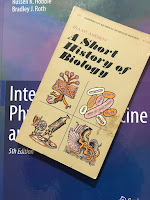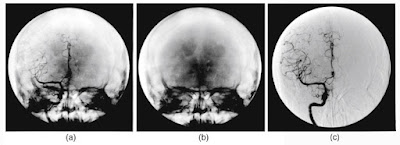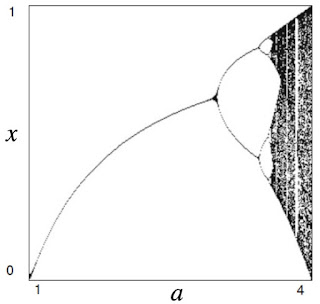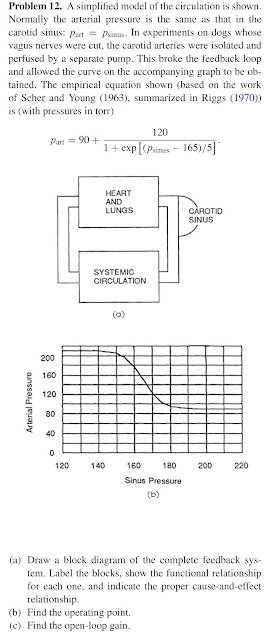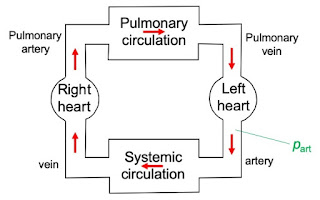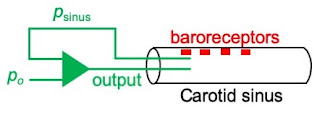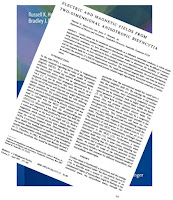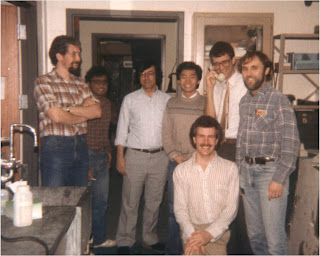Russ Hobbie and I don’t discuss Cerenkov Luminescence Imaging in Intermediate Physics for Medicine and Biology, but you can learn a lot about it using the physics we do discuss. For example, can particles travel faster than the speed of light? They can’t travel faster than the speed of light in a vacuum, but they can travel faster than the speed of light in a material such as water or tissue where light is slowed and the medium has an index of refraction. Below is a new homework problem, in which we consider electrons emitted in tissue by beta decay of the isotope iodine-131, used in many medical applications.
Problem 9 ¼. The end point kinetic energy (see Fig. 17.8) for beta decay of 131I is 606 keV, and tissue has an index of refraction of 1.4. Do any of the emitted electrons have a speed faster than the speed of light in the tissue? To determine this speed, use Eq. 14.1. Because the electrons move near the speed of light, to determine their speed as a function of their kinetic energy use a result from special relativity, Eq. 17.1.
For those who don’t have IPMB at your side (shame on you!), Eq. 14.1 is cn = c/n, where cn is the speed of light in the medium, c is the speed of light in a vacuum (3 × 108 m/s), and n is the index of refraction, and Eq. 17.1 is T + mc2 = mc2/√(1 − v2/c2), where v is the speed of the particle, T is its kinetic energy, and mc2 is the rest mass of an electron expressed as energy (511 keV).
If you solved this problem correctly, you found that some of the more energetic electrons emitted during beta decay of 131I do travel faster than the speed of light in tissue.
Cerenkov radiation is emitted at an angle θ with respect to the direction that the particle is moving. This distribution of light is characteristic of a shock wave, and is similar to the distribution of sound in a sonic boom made by a plane when it flies faster than the speed of sound. The new problem below requires the reader to calculate θ.
Problem 9 ½. The drawing below shows a particle moving to the right faster than the speed of light in the medium. The position of the particle at several instants is indicated by the purple dots. The location of light emitted by the particle at each position is shown by the black circles. The light adds to form a conical wave front, shown by the green lines.
(a) Use the red right triangle to calculate the angle θ as a function of the particle speed, v, and the index of refraction, n.
(b) Compute the value of θ for the fastest electrons emitted by beta decay of 131I in tissue.
The number of photons emitted tends to be greatest at short wavelengths, so Cerenkov radiation often has a blue tinge. However, readers of IPMB learned in Chapter 14 that the spectrum of radiation can look different when viewed as a function of frequency (or energy) rather than as a function of wavelength. Below is a new problem to explore this effect.
Problem 9 ¾. The number of photons dN emitted with a wavelength between λ and λ + dλ is approximately dN = Cdλ/λ2, where C is a constant.
(a) Sketch a plot of dN/dλ versus λ. Don’t worry about the scale of the axes (in other words, don't worry about the value of C); just make the plot qualitatively correct.
(b) Use methods similar to those introduced in Section 14.8 to determine the number of photons emitted with an energy between E and E + dE. Don’t worry about constant factors, just determine how dN/dE varies with E.
(c) Sketch a plot of dN/dE versus E. Again, just make the plot qualitatively correct.
If you solved part (c) correctly, you should have drawn a plot with a flat line, because dN/dE is independent of E. Of course, there must be some limits to this result, otherwise the particle would emit an infinite amount of energy when integrated over all photon energies. See Ciarrocchi and Belcari’s review for an explanation.
Perhaps the most interesting part of Ciarrocchi and Belcari’s article is their discussion of biomedical applications. You can use Cerenkov radiation to image beta emitters like 131I, positron emitters like 18F used in positron emission tomography, and high-energy protons required for proton therapy.
To learn more about Cerenkov radiation, watch this video by Don Lincoln. Enjoy!
How does Cerenkov radiation work?



